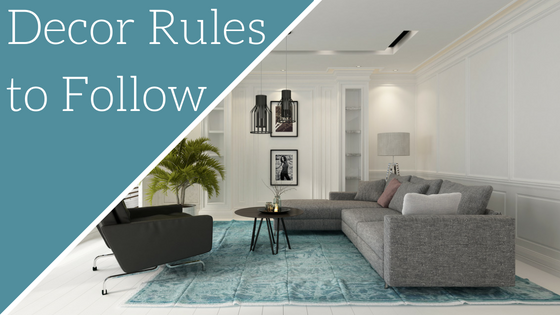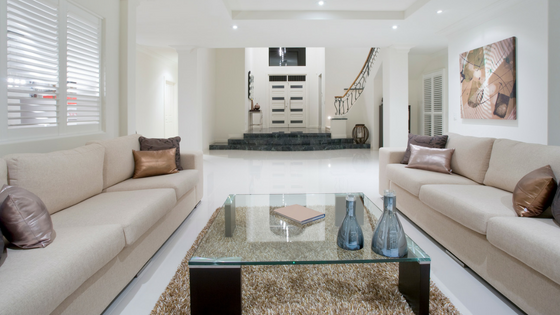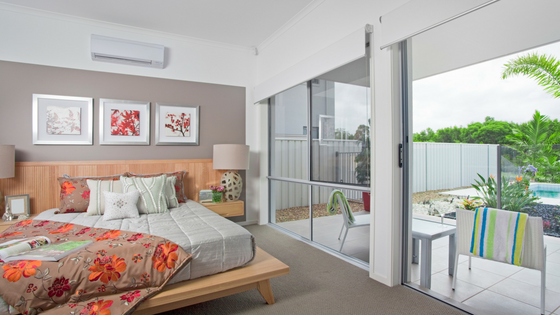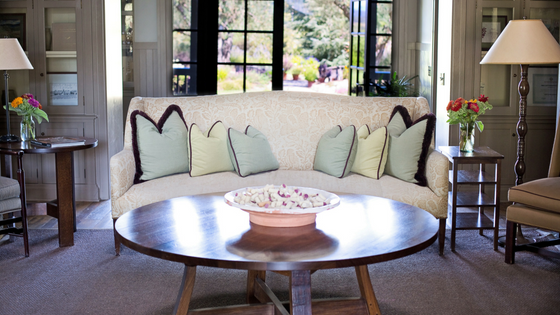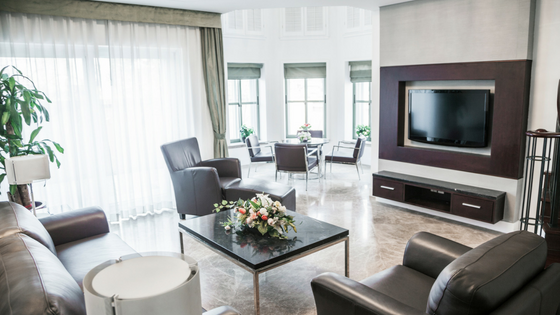Have you ever tried decorating a home and the space felt “off,” like something was wrong with it, but you couldn’t put your finger on it? Well, in most cases the problem is derived from the placement of objects.When it’s time to decorate a home, it’s important to know the rules of spacing.
Whether you’re selling a home, decorating an existing space, remodeling or starting from scratch, understanding a few key measurements and organizational guidelines can help your life run more smoothly at home.
Depending on where things are located, specific items in the proper place not only appeases the eye from a decorating stand point, but it allows you to use the items more effectively giving the room better function and flow. Here are 10 rule of thumb measurements to follow when decorating a home:
Artwork Hung Too Low or Too High
I’ll start with wall art placement since this is a common mistake I see in many rooms. Often times the artwork will be hung too low or too high on a wall. To be exact, the center of a framed piece of artwork should be 57 inches above the ground (that being the average human eye level, and the height galleries and museums use to decide where to hang pieces). If using art above a sofa, fill at least 50%-60% of the 5-foot high space above the sofa.
Sparking a Conversation
In a living room you want to be able to create an entertaining area that is perfect for conversing. In order to arrange furniture that is intimate enough to start a conversation without screaming across the room place furniture no further than 8-feet away from each other. This creates enough room to respect personal space, hold a conversation and maintain the room’s traffic flow.
Optimal Viewing
How many of you fight over the TV size in your home? My husband wants a big-screen TV– but, we don’t necessarily have the room for it. Not to mention there’s a rule on that too! You want to size your TV based on its distance from the sofa or bed. To get the minimum screen size in inches, divide the viewing distance by 3; for the maximum, divide by 1.5. Use these guidelines to position your furniture with a 15- to 20-degree viewing angle to the center of the screen.
Bed Size Matters
What size bed do you have in your bedroom? Since, we live in New York City we sleep on a queen size bed. (Oh, how I dream of one day being able to slip into a California king to retreat at night, heck I’d take a king.) Here are standard bed sizes to choose from: Twin 39”x 75”, Full 54” x 75”, Queen 60” x 80”, King 76” x 80”, California King 72” x 84” you’ll want to choose a bed that allows you to have at 3-feet of walking space around the bed.
Leg Clearance
Have you ever went to sit under a table only to realize your legs don’t fit? That’s because the dining chair, office chair or even stool is too high for the tabletop. Allow 20″ to 28″ inches for leg clearance below a desk or dining table and the seat height of the chair should be 14″-18″ with your feet flat on the floor. A counter stool is usually around 24″ and is typically used at a kitchen counter. A bar stool is about 30″ and is designed for sitting at a bar.
Watch the video above to measure out the remaining objects in your home or continue reading below.
Room Bling
Most dining rooms need some type of amazing lighting fixture and we usually suggest a chandelier — but how high should they be hung? We see this mistake a lot during our consultations where a chandelier hangs too high or even too low to the dining table. For the best height the chandelier should hang between 30 to 36 inches above the table.
Dining Room Congestion
The next measurement has to do with space around your dining room table. We aim to have at least 3-feet between the the other furniture or walls to create a traffic flow that’s easy to maneuver around. Home buyers or guests should easily be able to walk around the room without bumping into the furniture. Anything less than 3 feet will feel crampt and ackward.
Table Space
Since we’re on the subject of tables, let’s talk coffee tables. You need to clear a pathway that’s about 26 to 36 inches away from other furniture to walk comfortably around a coffee table. Again, we don’t want people to bang into the table or feel the room is too small to fit the furniture basics.
Rug Rules
Rugs come in all different sizes the most popular to use in a home staging are 5×8 or 8×10. You’ll choose the perfect size based upon on how big the room is. The rug in the video above is a custom size rug from FLOR carpet tiles, so it’s in between the two sizes. Regardless of the size you use there should 20 to 36 inches between the rug and the wall.
Window Panes
The last all important measurement to consider is how to hang your curtains. A good rule of thumb is to hang a curtain rod as close to the ceiling as possible so it makes the room appear bigger and extend the rod at least 6 to 8 inches out past the trim to make the window appear bigger.
Another important tip here is to always measure your rooms, ceiling height and doorways before you go shopping for furniture and accessories to ensure pieces will fit through doors and in their planned space.
Now, why do these measurements matter?
While you do have some room to bend the rules, use these guidelines so your furniture, fixtures and decor enhances the eye appeal of the room, rather than create that awkward feeling, especially if you’re selling a property.
Want more measurements to consider before staging or decorating a home? Enter your details below to get the all important measurement guide.
Happy Decorating,

